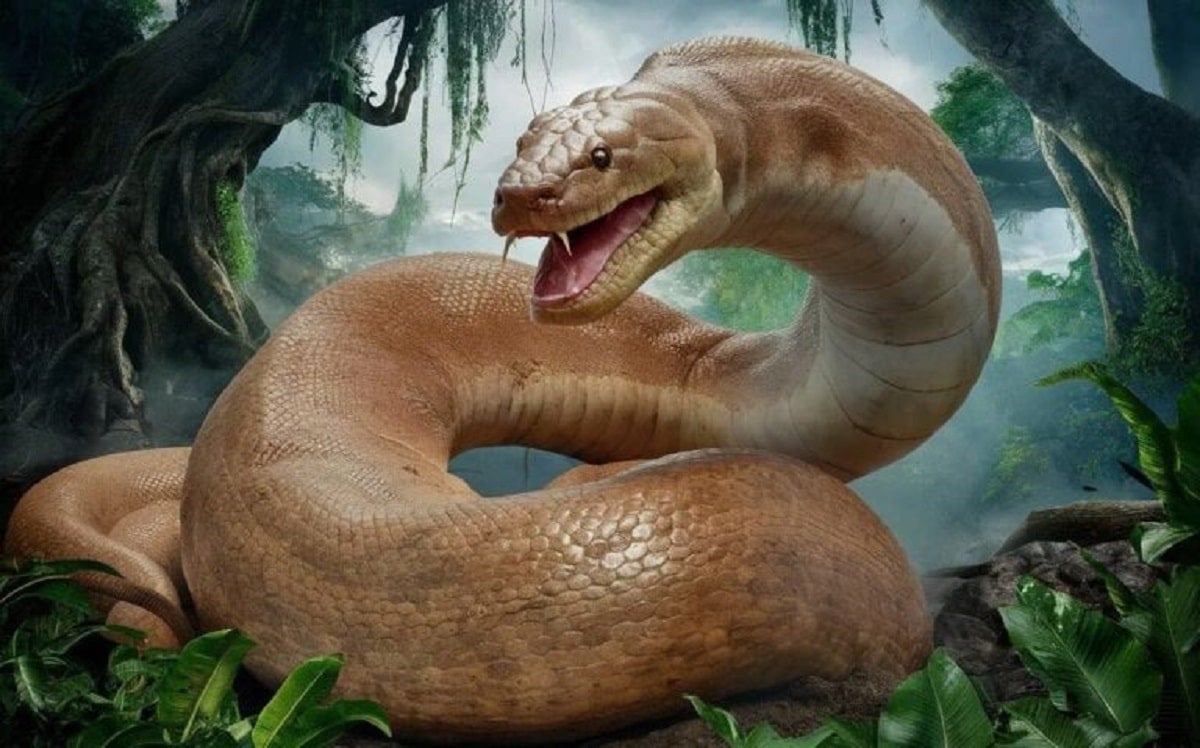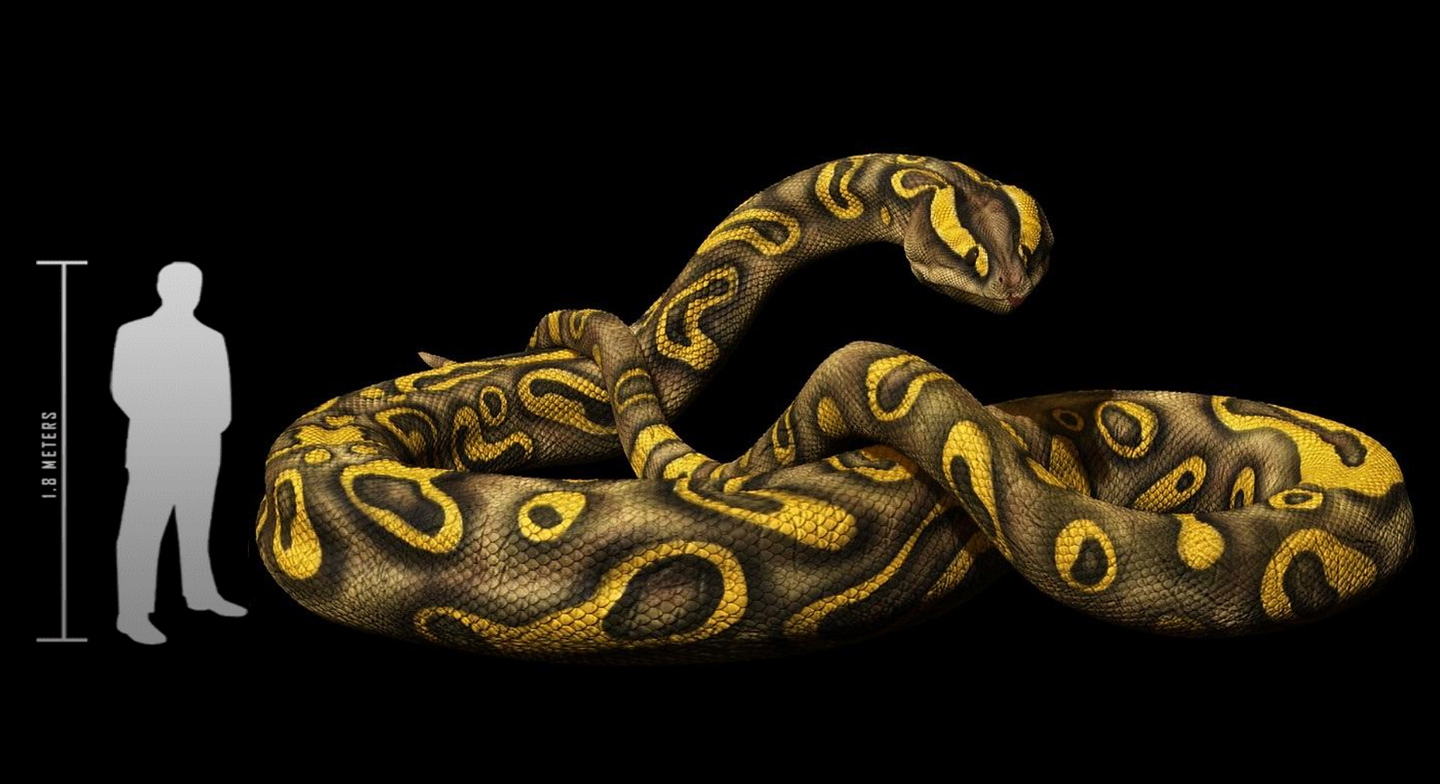
Researchers in India have made an astonishing discovery with the unearthing of fossilized remains from a colossal snake that greatly exceeds the size of its living relatives. This ancient serpent, known as Vasuki indicus, reaches an impressive length of 50 feet, ranking among the largest snakes ever identified. Its discovery offers an exceptional opportunity to explore the ancient ecological diversity of the region.
The remarkably intact fossil was excavated by scientists from the Indian Institute of Technology Roorkee. They discovered a significant segment of the vertebral column, a rare find that provides important details about the anatomy of this impressive creature. According to Dr. Rajesh Kumar, the study’s lead researcher, the fossil is “excellently preserved,” underscoring its value in the realm of scientific study.
As detailed in a report published in Scientific Reports, the research team identified the snake through an analysis of 27 fossilized vertebrae, confirming its status as a long-extinct species. The snake’s immense size indicates that it was likely one of the largest to have ever inhabited the planet.

The name Vasuki indicus draws inspiration from Hindu mythology, where the serpent Vāsuki is portrayed as coiled around the neck of Lord Shiva, a significant deity in Shaivism. This designation illustrates the deep symbolic ties between snakes and Indian culture.
In addition to its impressive dimensions, Vasuki indicus likely led a distinctive lifestyle. Experts suggest that its large size may have constrained its speed, which means it primarily hunted by ambush rather than being an active predator. While it may have moved slowly, its sheer bulk would have made it a significant threat to its prey.
The fossil findings also provide valuable information about the ancient ecosystems on the Indian subcontinent, indicating an environment capable of supporting such a massive predator and suggesting a time rich in diverse and formidable wildlife. This discovery has implications for our understanding of snake evolution in prehistoric times.
Further examination indicates that Vasuki likely employed ambush strategies similar to modern pythons, using constriction to overcome its prey.
The study elaborates on the snake’s robust features and well-developed physique. With a wide, cylindrical body, Vasuki indicus could have weighed about 2,200 pounds, making it a true giant of the prehistoric world.
Comparing it to other extinct serpents highlights the unique proportions of Vasuki indicus. While it shares a similar length with the notable Titanoboa, which ranged from 45 to 50 feet, Vasuki’s girth significantly differentiates it, potentially earning it the title of the largest snake ever discovered.

Researchers investigating the evolutionary lineage of such massive species have traced their origins back to the Madtsoiidae family. This group thrived for around 100 million years across Africa, Europe, and India, leaving a lasting influence on prehistoric ecosystems.
Distinctively, Vasuki indicus is rooted specifically in the Indian region during a time frame of about 56 to 34 million years ago.
The identification of Vasuki indicus stands as a significant reflection of India’s abundant paleontological resources. Dr. Kumar stresses the relevance of such discoveries in unraveling the mysteries of ancient life, highlighting, “Each fossil we uncover reveals elements of our past, enhancing our comprehension of Earth’s ancient inhabitants.”

The revelation of Vasuki indicus marks a remarkable chapter in paleontological history. As scientists continue to delve deeper into Earth’s past, findings like these illuminate the captivating diversity of species that once thrived on our planet.
The Longest Snakes in the World Today
Reticulated Python (Malayopython reticulatus)
The reticulated python claims the title of the longest snake worldwide, with lengths reaching up to 30 feet (9 meters). Originating from Southeast Asia, it flourishes in rainforests, grasslands, and woodlands. Characterized by its distinctive dark and light patterned scales, this non-venomous constrictor preys predominantly on mammals and birds, although incidences of human encounters are rare, as these snakes prefer to avoid conflicts.

Green Anaconda (Eunectes murinus)
While the green anaconda is recognized as the heaviest snake species, it can achieve lengths of approximately 29 feet (8.8 meters). Commonly found in South America, particularly in regions like the Amazon and Orinoco basins, this massive snake is semiaquatic and often resides in swamps and rivers. Its significant bulk enables it to conquer large prey, including capybaras, deer, and even caimans through constriction.

Burmese Python (Python bivittatus)
The Burmese python is another significant species, capable of growing to lengths of 23 feet (7 meters). Native to Southeast Asia, they thrive in marshes, grasslands, and open forests. This species has gained notoriety as an invasive species in the Florida Everglades, having a large appetite for varied prey including birds, mammals, and even alligators. Its popularity in the pet trade has contributed to its range expansion.
African Rock Python (Python sebae)
The largest snake in Africa, the African rock python can extend to about 20 feet (6 meters). Distributed throughout sub-Saharan Africa, it adapts to various environments, including savannas, forests, and grasslands. When threatened, this constrictor exhibits an aggressive demeanor and is known to target large animals such as antelopes and warthogs for sustenance.
Indian Python (Python molurus)
Closely related to the Burmese python, the Indian python can grow to approximately 20 feet (6 meters). It thrives in the forests, grasslands, and swamps of the Indian subcontinent. This species holds a revered place in Indian culture and folklore. As a powerful constrictor, it typically preys on small mammals, birds, and reptiles.
Amethystine Python (Morelia amethistina)
Commonly known as the scrub python, this species can reach lengths of up to 19 feet (5.8 meters). Native to Australia, Papua New Guinea, and parts of Indonesia, its name originates from its stunning scales that reflect a purple hue in light. This python excels at climbing and hunting, with a diet mainly consisting of birds, bats, and small mammals.
King Cobra (Ophiophagus hannah)
Recognized as the longest venomous snake in existence, the king cobra can measure up to 18 feet (5.5 meters). Its range extends across Southeast Asia and parts of India, known for its potent neurotoxic venom and iconic hood. Despite its formidable size, it predominantly feeds on other snakes, including a variety of venomous species.
Boa Constrictor (Boa constrictor)
The boa constrictor can attain lengths of up to 13 feet (4 meters) and is indigenous to the tropical regions of Central and South America. Although not as lengthy as some pythons, it remains a prominent constrictor species, utilizing its strong body to overwhelm prey. Solitary by nature, boas thrive in diverse habitats, from rainforests to arid landscapes.
Yellow Anaconda (Eunectes notaeus)
While smaller compared to the green anaconda, the yellow anaconda can still reach lengths of around 13 feet (4 meters). It thrives in the swamps and marshes of South America, particularly in regions like Paraguay and Argentina. Similar to other anacondas, it is semi-aquatic, primarily hunting aquatic prey such as fish and birds.
Olive Python (Liasis olivaceus)
Natives of Australia, olive pythons can grow as long as 13 feet (4 meters). Their smooth, olive-colored scales give them their name. Preferring rocky terrain and gorges, they prey on wallabies, bats, and smaller mammals. As non-venomous constrictors, olive pythons rely on their strength to subdue their prey.
These remarkable snakes exemplify notable lengths in the reptilian world, showcasing a wide array of habitats, behaviors, and survival adaptations.









